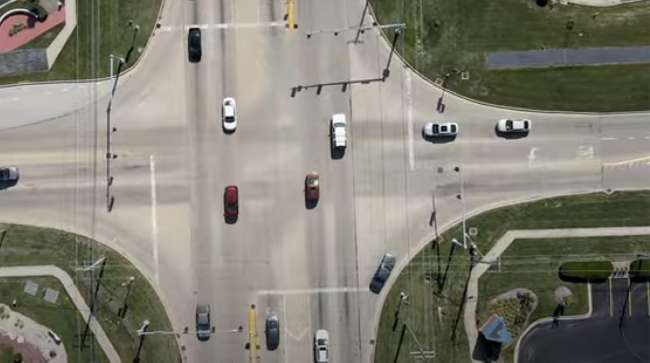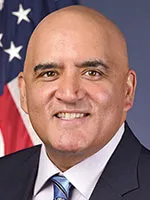Senior Reporter
FHWA Chief Touts Emerging Transportation Technologies

[Stay on top of transportation news: Get TTNews in your inbox.]
WASHINGTON — Adopting emerging technologies across the transportation landscape will improve safety for commuters and the freight sector, the nation’s top highway director said, as stakeholders look to decrease traffic fatalities.
Federal Highway Administration leader Shailen Bhatt pressed federal lawmakers to consider a vast portfolio of applications designed to enhance safety along commercial and passenger corridors. “One of my frustrations in transportation is — ever since I’ve been in transportation — we’re all saying, ‘Let’s get toward or get to zero deaths.’ And for all of my time in transportation, we’ve gone the wrong way,” Bhatt told reporters after a congressional hearing this month.
The administrator pointed to Congress’ role in improving safety on the country’s roadways, and highlighted National Highway Traffic Safety Administration data that estimated nearly 41,000 fatalities occurred in 2023. “We’re starting to see some cautious optimism,” Bhatt explained. “But zero deaths is our goal. And I’m just a firm believer that, if we are courageous in our deployment of things like technology and a ‘Safe System’ approach, we’re going to be able to get there. But we can’t wait decades. We’ve got to get there sooner.”
Per the U.S. Department of Transportation website, a "Safe System" approach to roadway safety integrates the needs of all users, anticipates the possibility of errors by drivers and other road users, and manages crash impact forces to levels tolerable by the human body. It includes five elements: safe road users, safe vehicles, safe speeds, safe roads and post-crash care.

Bhatt
Transportation leaders on Capitol Hill plan to draft multiyear highway policy legislation as early as next year. Promoting new national safety standards and guidelines will be central to that measure’s objectives. Such policies would build on programs advanced by the $1.2 trillion Infrastructure Investment and Jobs Act of 2021.
“Last year 40,990 people died on roads in the United States. … it’s a tragic number, especially for all of those who lost loved ones,” Sen. Ted Cruz (R-Texas) said during a hearing last month. He is the top Republican on the Commerce Committee on freight policy.
“There are many reasons that go into this,” Cruz went on, “one of which is lack of adequate infrastructure, lack of sufficient freeways, lack of sufficient space that creates more traffic.”
Prominent national stakeholders continue to call on Congress to adopt policies associated with the deployment of safety technologies and infrastructure initiatives.
Jake Nelson, director for traffic safety advocacy and research at the American Automobile Association, recently told senators the organization “believes that state and local transportation leaders would benefit from more guidance and technical assistance relative to the appropriate outreach, education, solicitation of input, and adoption of local preferences for infrastructure investments made where they live.
“To ensure that community residents are the same people who benefit from this historic congressional investment in roadway safety, careful attention must be paid to garnering local support for the infrastructure-based solutions to the safety challenges that exist locally,” he continued. “This front-end work will help drive greater demand for current and future investments made possible by Congress.”
Want more news? Listen to today's daily briefing above or go here for more info
The “Safe System” approach advances the concept that “humans make mistakes and that human bodies have limited ability to tolerate crash impacts,” according to FHWA.
“In a ‘Safe System,’ those mistakes should never lead to death. Applying the ‘Safe System’ approach involves anticipating human mistakes by designing and managing road infrastructure to keep the risk of a mistake low; and when a mistake leads to a crash, the impact on the human body doesn’t result in a fatality or serious injury,” per background information the agency published online this year. “Road design and management should encourage safe speeds and manipulate appropriate crash angles to reduce injury severity.”
The Biden administration’s Vision Zero campaign seeks to reach zero traffic fatalities by 2050.




